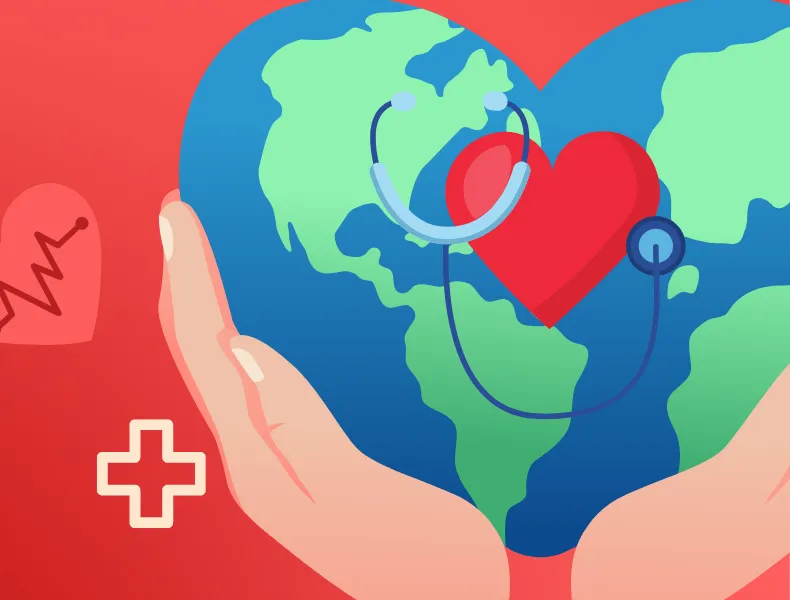Written and medically reviewed by Dorcas Morak, PharmD
Hey there! Did you know June is National Migraine and Headache Awareness Month? It's the perfect time to dive into the world of migraines and explore different treatment options. We all know how debilitating headaches can be, and migraines take it to a whole new level. But don't worry, arming yourself with knowledge about the causes, symptoms, and treatments can make a world of difference when it comes to managing them.Let's Talk Migraines
Migraines are intense, recurring headaches that affect around 12% of people in the US, with women being more susceptible. While the exact cause remains a mystery, factors like genetics and certain medical conditions might contribute to their onset. Migraines can be triggered by various things like stress, hormones, specific foods, and weather changes, among others.
Spotting the Signs
Migraines have a way of announcing their arrival through different phases. While not everyone experiences all of them, knowing what to expect can help you identify your symptoms accurately. Here's the breakdown:
- Prodrome Phase: This sneaky phase can kick in up to 24 hours before the actual migraine and bring along cravings, frequent trips to the bathroom, and uncontrollable yawning. Weird, right?
- Aura Phase: Picture this: flashing lights, zig-zag lines, feeling like you've been touched by an otherworldly force. Welcome to the aura phase, where visual disturbances and sensory sensations can join the party.
- Headache Phase: The main event. Migraine headaches often come with throbbing pain on one side of the head.
- Postdrome Phase: After the headache subsides, you might still feel like you've been through a whirlwind. The postdrome phase can leave you feeling weak, confused, or downright exhausted. Take it easy!
Navigating Migraine Treatment
Migraines can't be cured, but there are ways to manage them effectively. The right treatment plan depends on factors like your age, frequency of attacks, accompanying symptoms, and any existing health conditions. Let's explore some common approaches together:
Lifestyle Adjustments: Identifying triggers and finding stress management techniques can work wonders in reducing the frequency of migraines.
Over-the-Counter (OTC) Pain Relievers: For milder attacks without nausea or vomiting, you can try OTC options like acetaminophen (Tylenol) to get some relief.
Prescription Medications: Sometimes, you need a little extra help. Your doctor may prescribe specific medications tailored to your needs for prevention or management.
Hormone Therapy: If your migraines are tied to your menstrual cycle, hormone therapy might be an avenue worth exploring.
Alternative Care Options: Alongside traditional treatments, techniques such as meditation, acupressure, or acupuncture can provide some additional relief.
Medications Made for Migraines
When OTC options aren't cutting it, your doctor might recommend specific medications designed to tackle migraines head-on (pun intended). Here's a glimpse at what they might prescribe:
NSAIDs: ibuprofen (Advil) or aspirin can help with mild-to-moderate attacks that don't involve nausea or vomiting.
Triptans: These are often the go-to for nerve pain associated with migraines. They come in different forms, such as sumatriptan (Onzetra), eletriptan (Relpax), and rizatriptan (Maxalt), and can work wonders.
Antiemetics: To combat that nasty nausea, medications like metoclopramide (Reglan), chlorpromazine, and prochlorperazine (Compro) can be used alongside NSAIDs.
Ergot Alkaloids: When other treatments fall short, these less commonly prescribed medications, such as Migranal and Ergomar, might be considered.
Prevention is Key
If you find yourself battling frequent and debilitating migraines, preventive medications could be a game-changer. Your doctor might suggest options like antihypertensives, anticonvulsants, certain antidepressants, or even Botox injections into the head and neck muscles every few months. It's all about finding what works best for you!
Let's Raise Awareness!
Now that you're armed with knowledge about migraines and their treatment options, here are some great ways to get involved and raise awareness during National Migraine and Headache Awareness Month:
Share on Social Media: Spread the word by posting informative content about migraines, their impact, and available resources. Use hashtags like #MigraineAwarenessMonth and #HeadacheAwareness to reach a broader audience.
Organize a Fundraising Event: Host a virtual or in-person fundraising event to support migraine and headache research organizations. It could be a charity run, a bake sale, or an online auction. Encourage friends, family, and colleagues to participate and donate.
Volunteer for Advocacy Organizations: Reach out to local or national migraine advocacy groups and offer your time and skills. You can assist with organizing events, creating educational materials, or participating in awareness campaigns.
Share Personal Stories: If you have personal experience with migraines or headaches, consider starting a blog or sharing your story on existing platforms. Sharing your journey can provide comfort and inspiration to others going through similar experiences.
Support Research Efforts: Donate to reputable research organizations focused on understanding migraines and developing better treatment options. Even a small contribution can make a significant impact on advancing scientific knowledge.
Promote Self-Care and Stress Management: Encourage individuals to prioritize self-care and stress management techniques, as these can help reduce the frequency and severity of migraines. Share tips and resources for relaxation, mindfulness, and healthy lifestyle choices.
Remember, every effort counts in creating a supportive community and raising awareness during National Migraine and Headache Awareness Month. By working together, we can make a difference in the lives of those affected by migraines.

















